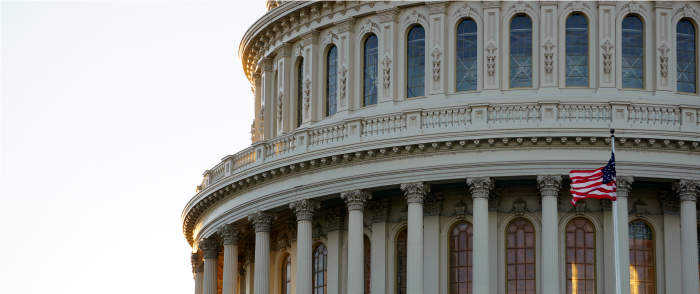PPP Reopens: What Small Employers Need to Know

The Paycheck Protection Program (PPP) is a loan program for small businesses that is administered by the Small Business Administration (SBA). Forgiveness of these loans is available if:
- Employee and compensation levels are maintained;
- The loan proceeds are spent on payroll costs and other eligible expenses; and
- At least 60 percent of the proceeds are spent on payroll costs.
The SBA had stopped issuing PPP loans in August 2020. However, on December 27, 2020, President Trump signed the Consolidated Appropriations Act (CAA), which reopened the PPP to issue new loans, allows businesses to take out a second PPP loan, and makes other changes to the program.
A summary of the major changes are outlined below.
First Draw PPP Loans:
As a result of the CAA, the PPP reopened to community financial institutions (CFIs) for First Draw Loans the week of January 11, 2021. PPP lending reopened to all participating lenders on January 19, 2021.
Second Draw PPP Loans:
Borrowers may now obtain a second PPP loan, even if an application for forgiveness of an original PPP loan hasn't been filed. Initial loans are available to new borrowers with 500 or fewer employees, and subsequent ("Second Draw") PPP loans of up to $2 million are available to organizations with 300 or fewer employees that can document revenue declines of 25 percent or more in any quarter of 2020 compared to the same quarter of 2019. A borrower must have used (or will use) the full amount of the first PPP loan on or before disbursement of the Second Draw loan.
The SBA began accepting applications for Second Draw PPP Loans on January 13, 2021. As with First Draw Loans, the SBA only accepted applications from participating CFIs at first and then from all lenders on January 19, 2021.
Maximum Loan Amount:
Borrowers may receive a loan amount of up to 2.5 times the average monthly payroll costs in the one year prior to the loan or calendar year 2019, up to $10 million (up to $2 million for Second Draw loans). However, businesses in the Accommodation and Food Services industries (NAICS code 72) may qualify for PPP loans of 3.5 times average monthly payroll costs, up to the applicable cap. Borrowers are limited to two PPP loans in total.
New businesses may calculate the maximum loan amount by taking 2.5 times the average monthly payroll costs in months in which the employer was in operation.
Forgiveness Provisions:
Generally, PPP forgiveness provisions and measures are the same as applied to the original PPP Loan program, as amended. "Covered periods" (the period in which PPP loan proceeds must be spent) can range from eight to 24 weeks at the election of the borrower.
PPP loans are 100 percent forgivable if proceeds are spent in accordance with program rules. Repayment may be required if certain measures aren't met, such as maintaining the number of employees, stable hours and wage levels. Proportionate repayment of PPP loans may be required if the employer doesn't maintain the average number of full-time-equivalent employees compared to the specified base period, or if compensation for any individual making less than $100,000 per year is reduced by more than 25 percent.
There are safe-harbor alternatives for these forgiveness reduction measures. Generally, if reductions in the number of employees or in compensation are restored by a specified "safe-harbor" date, reductions won't affect loan forgiveness. The safe-harbor restoration date was changed from December 31, 2020 to the last day of the borrower's covered period for all new loans. (The deadline remains December 31, 2020 for loans issued on or before August 8, 2020.) Forgiveness isn't reduced if the employer can document written offers to rehire individuals, an inability to hire similarly qualified employees, or an inability to return to the same level of business activity due to compliance with COVID-related guidance. (See the SBA Form 3508 or 3508S for details.)
Forgivable Expenses Expanded:
Forgivable expenses now include supplier costs and investments in facility modifications and personal protective equipment to operate safely, including:
- Business software or cloud computing services that facilitate operations, including payroll and human resources systems to facilitate processing and tracking and similar software and services for sales, billing, accounting and/or tracking of supplies, inventory, records and expenses;
- Certain property damage costs related to public disturbances that occurred during 2020 that weren't covered by insurance or other compensation;
- Certain supplier costs pursuant to a contract or order that was in effect before the date of disbursement of the covered loan for the supply of goods that are essential to the operations of the entity at the time at which the expenditure is made; and
- Worker protection expenditures that were required to facilitate the adaptation of business activities to comply with government restrictions related to COVID–19, such as drive-through window facilities, ventilation or filtration systems, physical barriers and health screening facilities.
Borrowers that received a PPP loan previously may be able to seek an increase in the original loan amount to pay for these new allowable expenses, and this wouldn't be considered a Second Draw loan. Borrowers still need to spend at least 60 percent of any PPP loan on payroll costs to qualify for forgiveness.
Simplified Application:
For loans under $150,000, borrowers aren't required to submit documentation, but must sign and submit a one-page form to be issued by the Small Business Administration (SBA), attest to a good faith effort to comply with PPP loan requirements, and report the number of employees retained as well as the loan proceeds spent on payroll and non-payroll costs. Borrowers must retain relevant records for four years.
For loans between $150,000 and $2 million, borrowers aren't required to submit documentation, but must complete related certifications, retain relevant employment records for four years, and retain other records and worksheets for three years. Lenders and/or the SBA may review and audit all PPP loans.
Tax Treatment of Expenses Paid with PPP Proceeds:
The CAA clarifies the tax treatment of expenses paid for with PPP loan proceeds. It provides that no deduction will be denied or reduced, no tax attribute will be reduced, and no basis increase will be denied, on the basis that such expenses qualify for PPP loan forgiveness.
However, this provision is effective only with respect to a loan for which forgiveness is provided under section 1106 of the CARES Act, as amended, after December 27, 2020 (the date of enactment of the CAA).
Lastly, the CAA permits PPP borrowers to also qualify for the Employee Retention Tax Credit (ERTC). However, PPP loan proceeds can't be used to pay eligible wages for an ERTC claim.
Applications Due by March 31, 2021:
PPP loan applications must be filed by March 31, 2021, but businesses should consider applying for PPP loans as soon as possible since appropriated funds are limited.
Visit our PPP page for more information on the Paycheck Protection Program.



